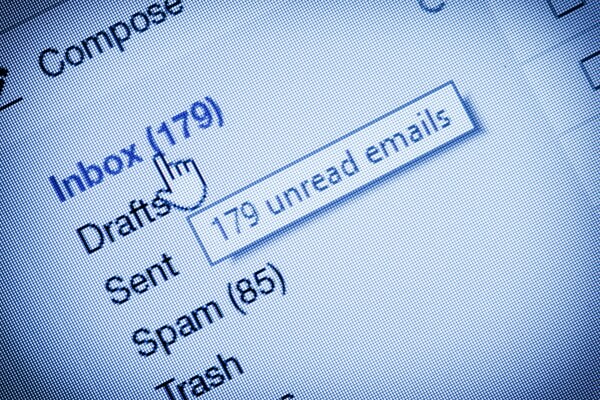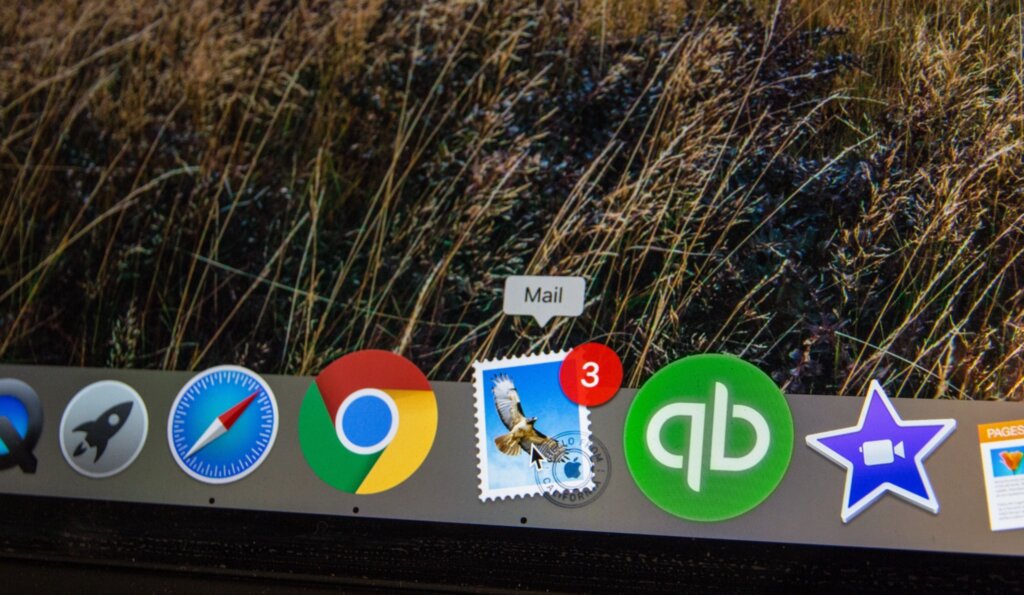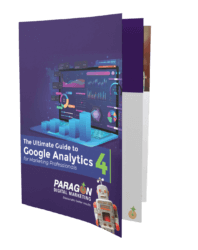
If you’ve been a marketing professional for any amount of time, then you almost certainly know that email marketing is a tried-and-true method for connecting with your audience and generating leads. According to CampaignMonitor, it was first used as a technique by a marketing executive at Digital Corporation back in 1978. The fact that it still persists today is a testament to its effectiveness.
In today’s digital marketing landscape, you must have a good strategy to ensure your email marketing is successful. If you glance at your inbox, chances are it looks like many others – absolutely bombarded with emails. Does anyone ever actually reach the elusive “inbox zero?”.
For many of us, we receive regular emails from some businesses that we’re always going to open. Why is that? Simply put, that company has done a good job of defining their audience and realizing you are part of it. Knowing your audience and catering to them is an important factor for email marketing success.
Key email marketing statistics
Despite being around for three or more decades, email marketing is still an essential component of your overall marketing strategy that is worth putting effort and/or budget into. We can support that statement by referencing some key data:
- Consumers check personal email for an average of 2.5 hours each weekday while at work.
- Just over half of consumers make a purchase after receiving a marketing email at least once per month.
- B2B marketing emails see a 23% higher click-to-open rate than B2C emails.
- 4.24% of email marketing traffic will make a purchase, compared to 2.49% of search engine traffic and 0.59% of traffic from social media.
- Email marketing is the most effective way to nurture leads, with 31% of businesses citing newsletters as their highest performing tactic in this area.
- Email marketing ROI outperforms other marketing strategies, with a return of $51 for every $1 you spend.
The secret to achieving success is having a robust email marketing strategy. This is how you’ll stand out in cluttered inboxes. Like every marketing strategy, email has pros and cons, and you need to be familiar with those to develop the best strategy.
The advantages of email marketing
There are multiple advantages to using email marketing, the first being that it’s accessible and manageable for businesses of all sizes. A team of one could manage to send out emails to a list, especially if you have good automated processes in place.
Email is inexpensive as well, making it accessible on every budget. Some platforms charge fees to use, but you can start with an email marketing platform that offers a free account up to a certain list size, or for a certain number of emails per month. Many of these platforms also come with creative tools, allowing you to send out professional-looking emails.
Perhaps the largest advantage of email marketing is the ongoing bang for your buck that it provides. A well curated and maintained email list is one of your most valuable marketing assets. It provides you with direct access to your current and prospective customers without needing to pay each and every time that you want to reach them with your messaging. Once they’re on your list you can reach out to them anytime that you want!
Another advantage of email? Everyone has it. People have become accustomed to receiving marketing emails and it remains a valuable channel for providing information, generating sales, and gathering feedback.
From a marketing perspective, the more you can personalize your messages so that they’re relevant to the recipient, the better. Email marketing allows this through the gathering of data and segmentation of customer groups. It allows you to be timely with communication and reach the right people at the right time.

Email marketing: The challenges
We’ve already touched on cluttered inboxes. It’s expected that by 2022, 347 billion emails will be sent every day – that’s a lot of businesses competing for attention! This presents two challenges: 1) getting people to open your email, and 2) getting them to take action.
To improve your odds of getting email opens and click-throughs, you’ll need to build a high-quality email list. That means a list of subscribers who closely represent your target customer and are more likely to be interested in your products or services. List-building represents another challenge, however. Collecting email addresses can take time, and you have to find ways to continuously improve the quality of your list.
Building an email list involves adding a signup form on your website and encouraging people to enter their email address. Typically, you need an enticing offer to go along with this ask, and it takes a while to build your list using this method. Another tactic is to set up a landing page and drive people to it, often using digital ads. This can help you to build up an email list more quickly, but again, you need good copy and a compelling offer to convince people to sign up.
Another common method is to purchase email lists from third-parties. The idea is to get a list that is as targeted as possible to your ideal customer. A clear advantage of this is that it’s fast – you can go from zero contacts to thousands in minutes. However, there are several disadvantages that can lead marketing experts to discourage buying email lists. The lists are often of poor quality, but perhaps more importantly, the people on those lists don’t likely don’t know your company and haven’t willingly volunteered their email address. This creates a high chance your emails get ignored, or worse, reported as spam.
Our preference? Build your own opt-in email list, which will yield better results in the long run.
While email marketing is an accessible and inexpensive way to reach customers, in some cases budget can be a constraint. For example, if you want to use advanced features for better personalization and segmentation, those options tend to come with a price tag. Keap, Ontraport, Hubspot, and ActiveCampaign all are examples of more advanced systems, but you’ll have to be prepared to pay.
Email marketing best practices
Keep Your List Engaged
Once you’ve overcome the challenge of building a high-quality email list, it’s important to keep your list engaged. You need a regular schedule for sending out emails so that your list is kept warm.
What happens if you don’t? Stale email lists occur when people disengage. Sometimes they forget who you are because they haven’t heard from you for quite a while, and when this happens, they may ignore, delete, or report emails as spam.
How often should you send an email? The answer to this tends to vary for different types of businesses. Frequency is something you should repeatedly test, and then monitor your analytics for results. As a minimum, once per month tends to be a good target to aim for.
Some other best practices include:
Personalize your emails
While it’s true that personalization seems to be the popular marketing trend across almost all channels, it remains a powerful best practice for your emails. Personalization goes beyond simply addressing someone by their first name, it also means ensuring that you’re only presenting them with the most relevant content sent with the right timing and cadence.
For example, you might set up milestones that trigger a highly relevant email. Birthday greetings and offers are one such strategy that many companies use. Or you might celebrate a customer’s anniversary after discovering and purchasing your products or services.
The aim should always be to only send out highly relevant emails. If someone just bought a particular product three days ago, you don’t want to send them a promotional email asking them to buy that product today.
Use segmentation
Segmentation is an effective tool to help ensure you deliver relevant, personalized content. Here are some great ways to segment customers:
- Demographic segmentation – this includes attributes such as age, gender, income, and education.
- Needs-based segmentation – based on the specific set of needs the customer has. You might identify this by surveying, or having them check boxes for topics they’re interested in when they sign up to your list.
- Geographic segmentation – by location, such as town, state, etc.
- Behavioral segmentation – based on their actions such as pages they visit on your website, content that they’ve downloaded, or prior purchases.
- Value-based segmentation – based on customer value to the business (e.g. segmenting into high value vs. medium or low).
There are many potential ways to use segmentation depending on what makes sense for your business. You can narrow segments as much as your data and email marketing system will allow.
Did you know there are at least 20-30 ways you can segment your email list? Share on XUse A/B testing
A/B testing is a very useful tool with many marketing applications. It involves running two versions of something to see which will perform better.
One popular usage is to test out two different subject lines for the same email, to see which one gets more opens. You can also A/B test the content within the email, such as:
- Your call to action
- The images you use
- The format or layout
- The wording of the content
To get more informative data, test out one element at a time. If you try to change too many things at once you won’t know which had the most impact.

Use email automation
When attempting a successful email marketing strategy, using a manual process is just plain difficult. It’s time-consuming and leaves the door open for critical details getting missed. Automation is your friend and is a best practice for effective email marketing.
Automation can include things like email workflows triggered by customer actions. Some examples of this include a welcome email series when people first sign up for your list, or an abandoned cart email sequence triggered by people adding items to their cart but leaving the website before purchasing.
You can also trigger an automation for all of those timely or action-based messages we mentioned earlier.
Find the right cadence and timing
With amazing content lined up and a killer subject line, your next task is to choose when to send your emails. This is another strategy to get noticed in your customer’s inbox – if you can time it for when they’re most likely checking email, then yours will appear near the top and have a better chance of getting the click.
How will you know when to send your emails? Check out the general data from market research that is available about your target customers’ online habits. Companies like Campaign Monitor publish annual studies on email use, and break down industry trends as well. You can try picking a time based upon that data, then test how well you do over time and make adjustments as needed. This is also another great opportunity to use A/B testing.
Another option is to use tools that have been created to provide a more effective email delivery schedule. These tools look at the habits of the people on your list and personalize when to send their emails. Some are add-on tools, while others are built-in as part of a premium subscription on an email platform. Look at ActiveCampaign, SendinBlue, MailChimp Premium, GetResponse, and Campaign Monitor Premium, to name just a few.
Measure and improve
It’s important to have a defined goal for each email you send. What do you want people to do and how will you know they’ve done it? Monitor and measure the success of your campaigns so that you can continuously make improvements.
Some key data points include:
- Open rate – The percentage of email recipients who open your email.
- Click-through rate – The percentage of opened emails where the recipient clicked on a link.
- Conversion rate – The percentage of email recipients who completed your desired action.
- Bounce rate – The percentage of total emails sent that weren’t successfully delivered.
- Unsubscribe rate – The percentage of unsubscribes from the total number of emails sent.
- Forward or share rate – The percentage of total recipients who shared or forwarded your email.
- List growth rate – The rate at which your list has grown, measured over a certain time period.
All of these measures are indicators of the relative health of your email list and the effectiveness of your campaigns. It makes sense to work on all of these simultaneously to figure out what works best with your audience. What will get you more opens or more click-throughs? Is it the quality of your subject line, or how you ask people to take action?
One critical element for improving all of these is to know your customers very well. If you’re getting opens and click-throughs, but no conversions, is there something about the offer or your landing page that turns them off or maybe isn’t functioning correctly?

Email marketing tools
Successful email marketing requires the right set of tools. Primarily, you need an email platform that can handle automation and segmentation. Because there are many tools, you first must determine which basic features you would like.
Some email marketing platforms are huge and packed with features, but they’re primarily intended for the medium to large business bracket. For a smaller marketing team, they’re often over-built, and you simply don’t need all of those features.
For small to medium-sized businesses, here are some of our picks:
- ActiveCampaign – This platform offers smart CRM solutions as well, including lead scoring and customer pipeline management. They also offer form integration, advanced reporting, and automation goals. This is a good-value platform for the features included.
- MailChimp – MailChimp is especially good for marketing teams that are starting small, but still want to access functions such as automation and segmentation. Another strength of MailChimp is its email design interface, allowing you to easily put together professional-looking messages.
- Pardot – Pardot is targeted at B2B marketing and is directly integrated with the Salesforce CRM. The platform prides itself on its marketing automation abilities and its simple interface and setup.
There are many more email marketing tools we could mention, so it’s important to research as many as possible and choose one that you can implement in your business with relative ease. Narrow down your must-have features and check out free trials and demos, or even tune in to a few webinars. Another thing to consider is integrations. If you currently use tools such as CRMs or sales platforms, integrations with your email platform will save manual steps.
Final thoughts
Email marketing is a staple of any good marketing strategy. Despite its relative maturity, it’s still one of the most effective and cost-efficient channels for reaching customers.
Marketing teams large and small can enjoy success with email, as long as they have good strategies and tools in place. Your key challenge is to get past the noisy inboxes and compel subscribers to pay attention to your emails.


